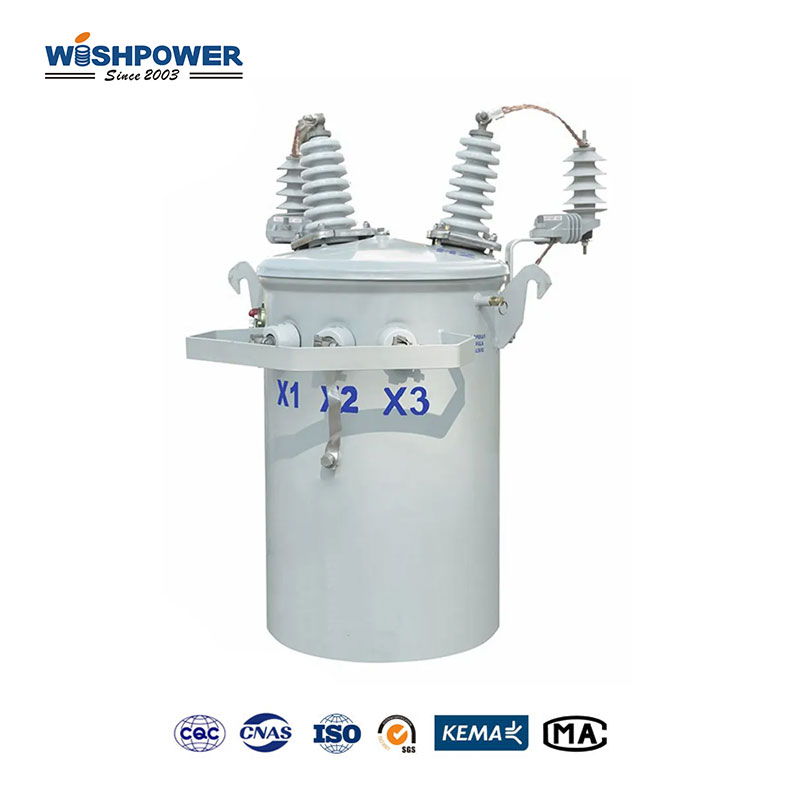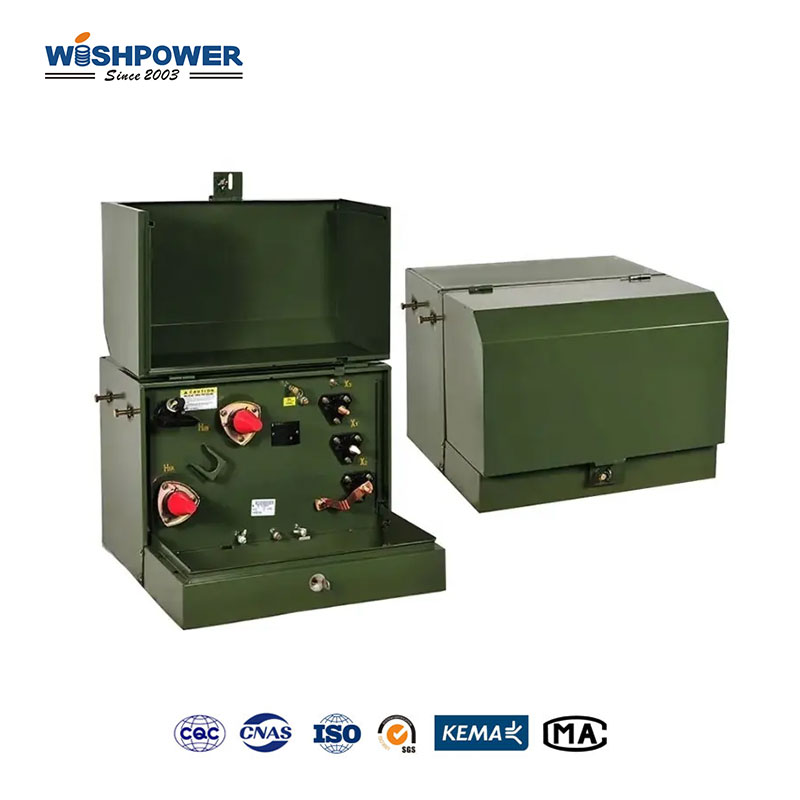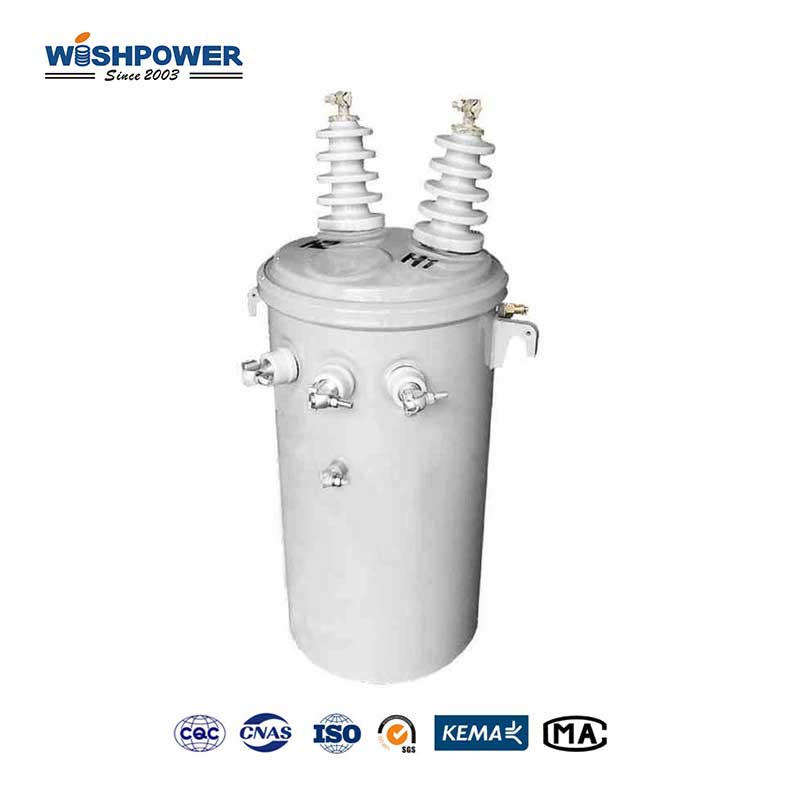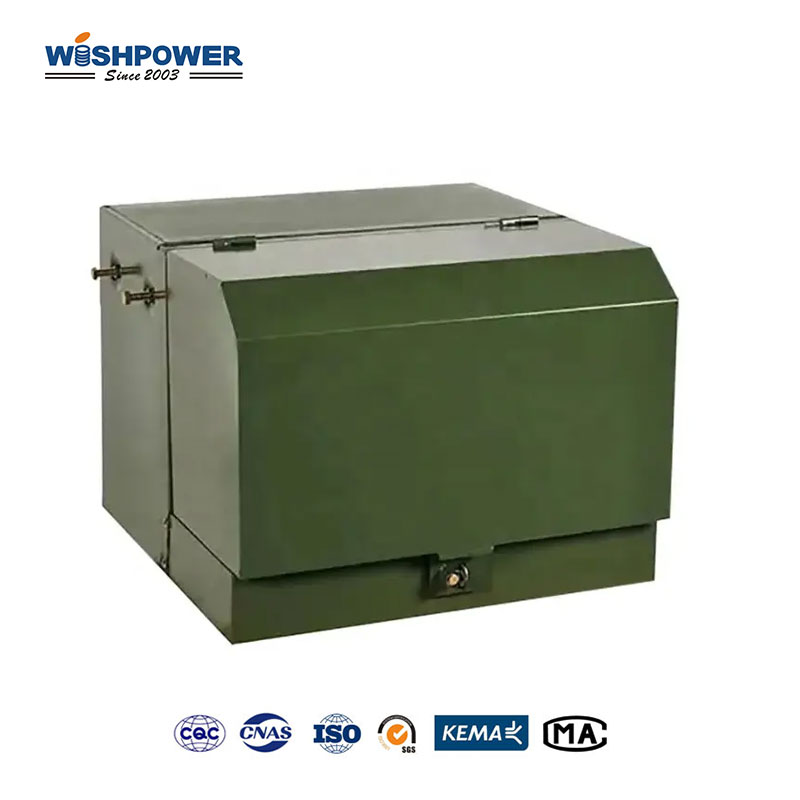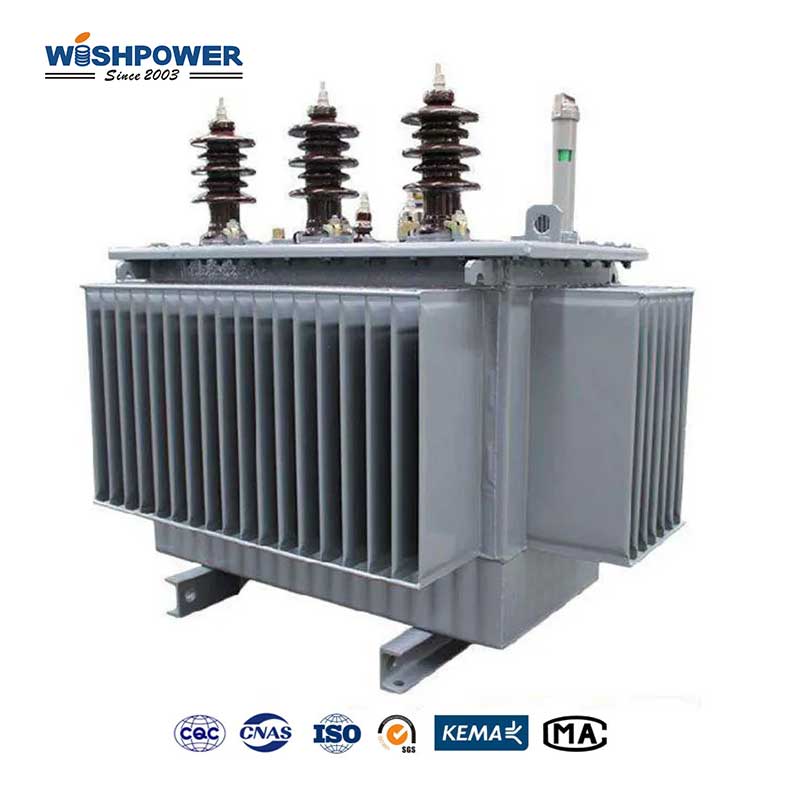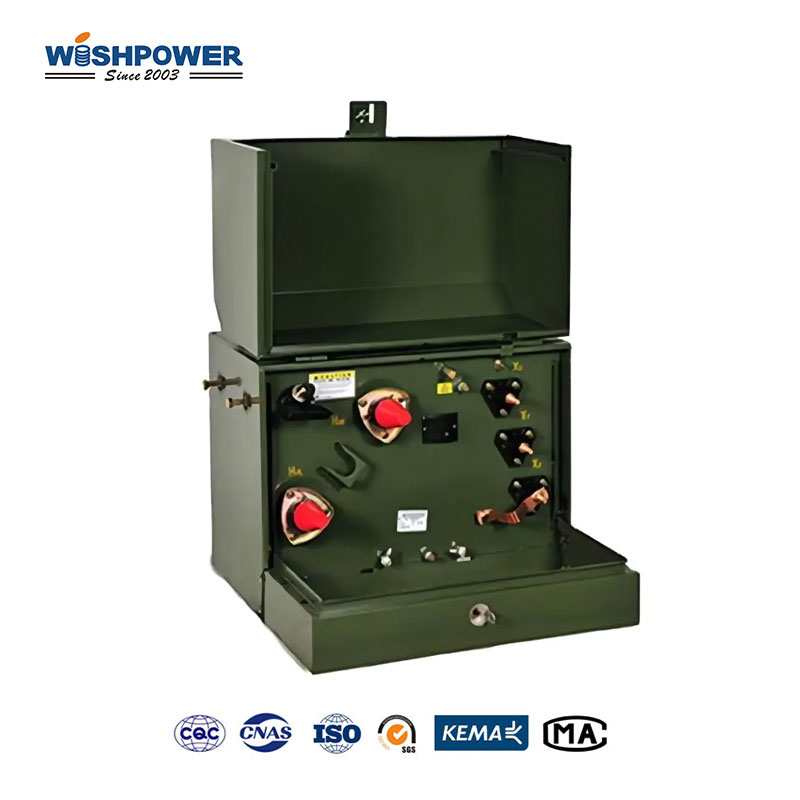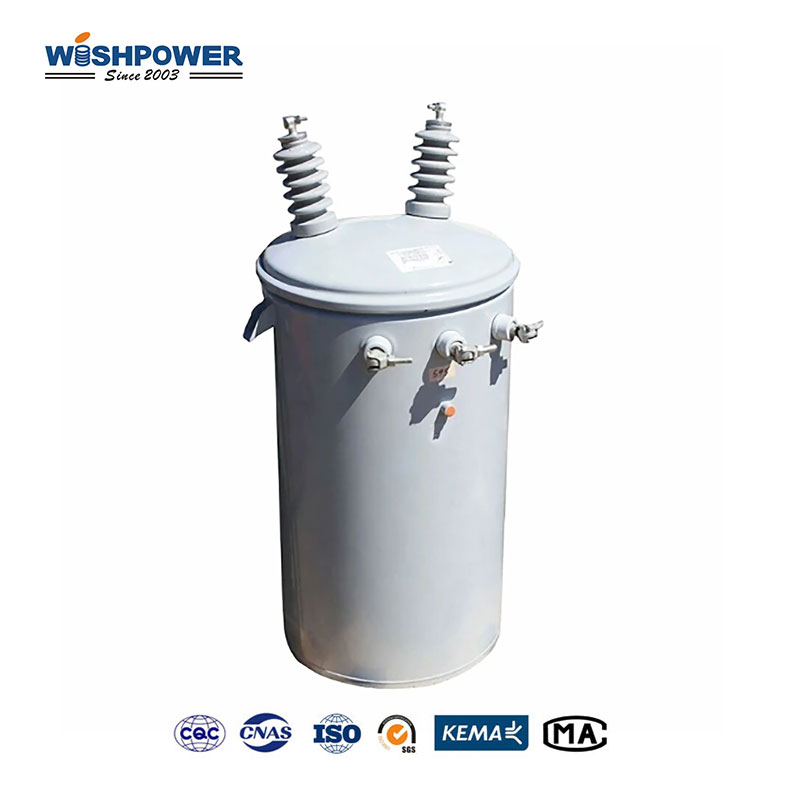Specification
| Rated Power (KVA) |
High Voltage (V) |
Low Voltage (V) |
Loss (W) |
Dimension (mm) |
Weight (kg) |
| No-load Loss (W) |
On-load Loss (W) |
W |
D |
H |
Oil Weight |
Total Weight |
| 5 |
34500 33000
or others |
120-240 240-480 347 600 |
19 |
75 |
465 |
485 |
855 |
15 |
92 |
| 10 |
36 |
120 |
500 |
525 |
885 |
22 |
150 |
| 15 |
50 |
195 |
520 |
565 |
905 |
30 |
210 |
| 25 |
80 |
290 |
560 |
590 |
935 |
45 |
258 |
| 37.5 |
105 |
360 |
610 |
625 |
935 |
50 |
340 |
| 50 |
135 |
500 |
635 |
675 |
1035 |
62 |
395 |
| 75 |
190 |
745 |
840 |
745 |
1035 |
86 |
495 |
| 100 |
210 |
1100 |
770 |
965 |
1135 |
94 |
585 |
| 167 |
350 |
1410 |
795 |
890 |
1335 |
138 |
680 |
If you are interested in our transformers and related transformer accessories, please get more information and professional solutions through this website or directly through info@wishpower.net
What is the Single Phase Transformer?
The single-phase transformer transfers electrical energy between circuits while converting voltage as it produces magnetic effects. These transformers work better for home and small business needs because they meet lower power requirements while serving domestic customers. This type of transformer consists of two main components: Input power flows through a primary coil and output power is generated from a secondary coil. By passing alternating current through the primary winding the transformer generates a magnetic field that runs through its core. When the primary side creates a magnetic field it automatically produces a voltage in the secondary side to move energy. Single-phase transformers adapt their voltage transformation capacity to match specific electrical system needs. These units save energy while weighing very little and remain affordable for lighting and heating needs plus small appliance management. They have less hardware for installation than multi-phase transformers thanks to their basic design.
Types
- Pole-Mounted Single-Phase Transformer:
Due to its pole installation option, this transformer serves areas where utility poles support power lines across rural and suburban landscapes. The transformer elevation on its pole post minimizes contact damage while improving power delivery paths. Ace adapters set down the voltage from distant power lines to match household power requirements. The devices appear regularly in residential communities. Planting transformers on utility poles makes maintenance straightforward while their position keeps space use effective for existing power networks.
- Pad-Mounted Single-Phase Transformer:
Unlike transformers placed on tall poles, these units sit on the ground in urban and suburban neighborhoods. Transformers at ground level get protection through concrete pads which let maintenance workers reach their equipment easily. Residential and commercial areas use pad-mounted transformers because power lines run underground here. Pad-mounted transformers are safer for busy areas and look better in appearance because they do not stand on poles like regular transformers.
- Wall-Mounted Single-Phase Transformer:
This transformer model mounts on walls and works well in compact commercial or industrial settings. Wall-mounted transformers deliver power distribution in a small space that fits perfectly inside factories and workshops. The setup lets technicians reach it simply and keeps the weather out but serves better for less intense power use.
- Floor-Mounted Single-Phase Transformer:
A floor-mounted transformer stays on the facility floor in either indoor or outdoor settings. Installers commonly put these transformers in factories and industrial buildings for support of high-power systems while maintaining easy access for maintenance. The floor-mounted transformer model delivers more power than wall-mounted versions yet needs substantial floor space due to its heavy-duty design.
- Underground Single-Phase Transformer:
When direct overhead power transmission is undesirable people go with underground transformers to hide the equipment. The ground installation spots these transformers in protected vaults and serves electricity-hungry urban neighborhoods. Although these transformers stay safe and hidden they demand detailed preparation and setup thanks to their tough installation needs.
How do you use a single-phase transformer?
Before using a single-phase transformer you need to choose between boosting and lowering the voltage to match the power source and load specifications. A transformer has two windings: The device includes a primary section connected to voltage input and a secondary section that delivers transformed voltage to the output target. Before using a transformer you must verify the voltage ratings of its primary and secondary sides match both the power source and the powered equipment needs.
Grounding needs special attention in installation to keep users safe from electrical shocks. A transformer connects its primary side females to AC power and its secondary side males touch electrical equipment appliances or machines. After installation, we need to check how well the transformer functions. The transformer needs to stay cool and work within its exact voltage limits because transformers are weak against power surges. Some transformers carry built-in protection tools such as fuses and circuit breakers to stop system failures.
Regulated care helps the transformer perform better. Our inspection team observes the equipment for damage while also removing dust and debris before inspecting connections for tightness issues and potential corrosion. They verify that the transformer stays within its proper capacity. Start problem-solving by examining links and power use with a quick check of transformer wiring and possible faults or excess currents. Transformers work properly when installed and maintained correctly to deliver secure dependable power conversion for homes and businesses.
Certificate
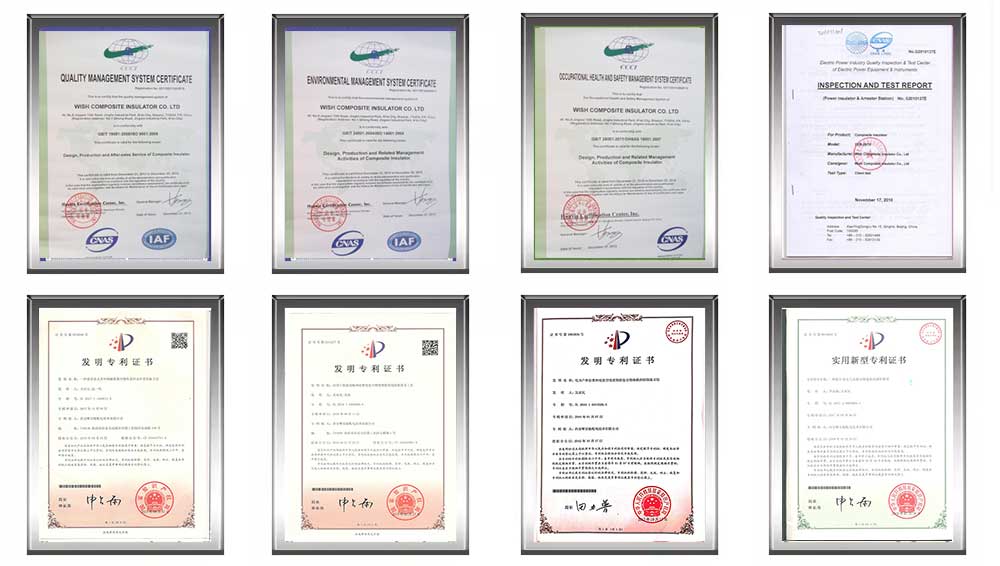
Factory
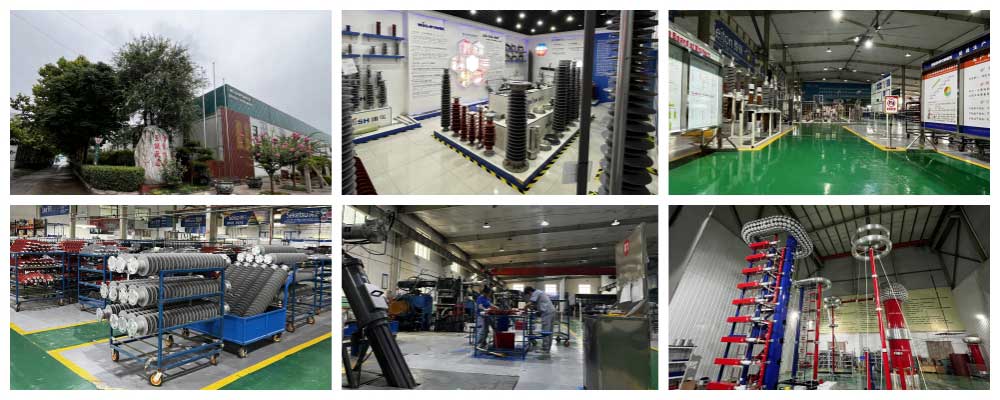
Hot Tags: Single Phase Transformer, transformer, made in Thailand available, manufacturers, ISO factory, wholesale, KEMA, high quantity, best, price, low to high voltage






